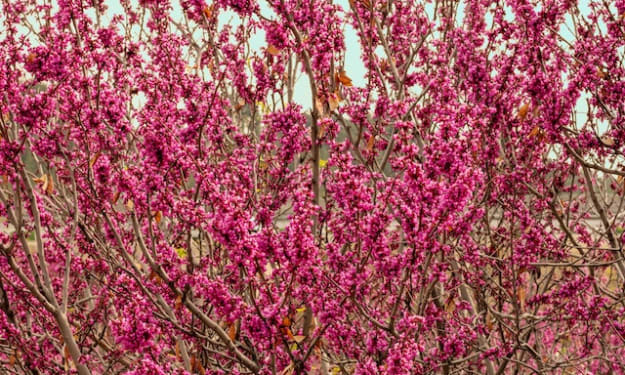Trees That Start with F
32 Trees That Start with F

The Fever Tree, scientifically known as Vachellia xanthophloea, is a distinctive tree species native to the eastern and southern regions of Africa. This tree has earned its name due to its notable characteristic - its bright greenish-yellow bark, which, when stripped or damaged, emits a strong aroma reminiscent of quinine, a compound used in treating fevers, hence its association with fever relief.
One of the most striking features of the Fever Tree is its habitat preference. It primarily thrives in swampy or riverside locales, where its root systems can access ample water sources. This adaptability to waterlogged environments makes it a crucial component of these ecosystems, as it helps stabilize soil and provides shelter for various aquatic creatures.
The Fever Tree is not only significant for its bark and habitat but also for the ecological role it plays. The tree's broad, umbrella-like canopy provides shade and refuge for numerous bird species. Birds such as weavers often build their nests within the Fever Tree's branches, taking advantage of the protective cover it offers.
Beyond its ecological importance, the Fever Tree has cultural and historical significance in Africa. Indigenous communities have long recognized its medicinal properties, using different parts of the tree to treat various ailments. Additionally, the timber from this tree has been utilized in constructing local dwellings and crafting traditional tools.
In recent years, the Fever Tree has garnered attention in the beverage industry due to its association with quinine. Quinine was historically used to treat malaria and was infused into tonic water, giving rise to the popular drink, gin and tonic. Fever-Tree, a well-known brand, took inspiration from this tree's name and its historical medicinal use, creating premium tonic waters and mixers.
In conclusion, the Fever Tree is a remarkable species that embodies the intricate relationship between nature, culture, and history. Its unique bark, ecological significance, and cultural ties make it a noteworthy and multifaceted element of the African landscape.
02.Flowering Dogwood
The Flowering Dogwood, scientifically known as Cornus florida, is a deciduous tree native to the eastern and central parts of the United States. It is renowned for its enchanting springtime display, making it a beloved addition to gardens and landscapes across the country.
One of the most captivating features of the Flowering Dogwood is its profusion of striking blossoms in early spring. These flowers appear before the tree's leaves fully unfurl, creating a breathtaking spectacle. The dogwood's flowers typically showcase four large, petal-like bracts, which are often white but can also be found in shades of pink or red, depending on the variety. These showy bracts surround small, inconspicuous yellowish-green flowers at the center.
Beyond its springtime beauty, the Flowering Dogwood offers year-round interest. In the fall, it produces clusters of bright red berries, which not only add visual appeal but also serve as a valuable food source for birds and wildlife. As the seasons progress, the tree's leaves transition to shades of red and purple before dropping in the winter.
The Flowering Dogwood is known for its adaptability and versatility. It can thrive in various soil types and light conditions, making it a popular choice for both residential and commercial landscaping. This adaptability, combined with its relatively small size, makes it an excellent fit for gardens and yards of different sizes.
Aside from its aesthetic value, the Flowering Dogwood holds cultural significance in some regions. It has been recognized as the state flower of Virginia and North Carolina in the United States.
In recent years, the Flowering Dogwood has faced challenges, including diseases such as Dogwood Anthracnose and powdery mildew. Conservation efforts and disease-resistant cultivars have been developed to preserve and protect this iconic tree species.
In conclusion, the Flowering Dogwood is a cherished tree known for its exquisite spring blossoms, vibrant fall foliage, and ecological importance. Its adaptability and timeless beauty continue to make it a cherished addition to landscapes and gardens, celebrating the changing seasons and enriching the natural environment.
03.Florida Maple
The Florida Maple, scientifically known as Acer floridanum, is a deciduous tree native to the southeastern United States, where it thrives in a variety of ecosystems, including wetlands, bottomlands, and upland forests. This tree is characterized by several distinctive features that set it apart and make it a valuable addition to its native landscapes.
One of the most noticeable features of the Florida Maple is its deeply lobed leaves. These leaves, typically 3-5 inches wide, have three or five distinct lobes and serrated edges. During the growing season, they exhibit a rich green color, providing shade and aesthetic appeal. However, it's in the fall that the Florida Maple truly shines, as its leaves undergo a transformation, turning a brilliant spectrum of colors, including shades of yellow, orange, and deep red. This vibrant autumn display adds a touch of magic to the landscape.
The Florida Maple's relatively smaller size, typically reaching heights of 30 to 40 feet, makes it a suitable choice for residential yards and urban areas. Its modest proportions are a stark contrast to some of its towering tree relatives, which further enhances its desirability for landscaping purposes.
In its native habitat, the Florida Maple plays a crucial role in maintaining the ecological balance. Its seeds provide a source of nourishment for wildlife, including birds and squirrels. Additionally, its presence along watercourses helps stabilize soils and mitigate erosion, making it an integral part of riparian ecosystems.
Like many tree species, the Florida Maple has faced some challenges in recent years, including habitat loss and environmental changes. Conservation efforts have been made to protect and promote the growth of this tree species, ensuring its continued presence in the southeastern United States.
In conclusion, the Florida Maple is a native gem known for its lobed leaves, stunning fall foliage, and ecological significance. Its adaptability, manageable size, and role in supporting local wildlife make it a valuable asset to both natural landscapes and human-designed gardens, enhancing the beauty and diversity of its native regions.
About the Creator
Enjoyed the story? Support the Creator.
Subscribe for free to receive all their stories in your feed. You could also pledge your support or give them a one-off tip, letting them know you appreciate their work.





Comments
There are no comments for this story
Be the first to respond and start the conversation.